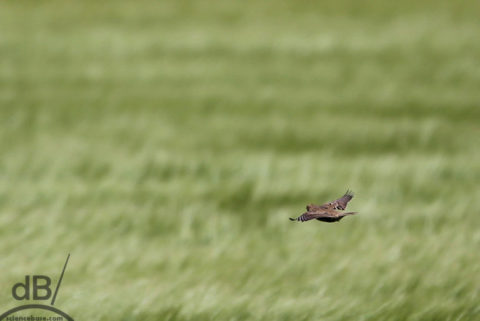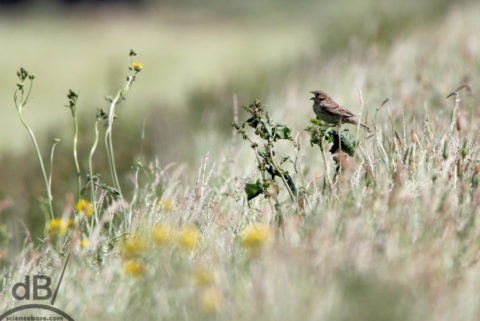The local fields of barley are, wave-upon-wave, like an opalescent green sea in the wind today, shimmering and shifting and stretching across the Fens. The barn swallows are reeling overhead and the skylarks are riding their aerial elevators up and down, tuning their on-board radios to their sweet Caroline in the fields below. And, then, there is this feathered friend.

Last time I posted a photo of a bird I thought was a corn bunting (Emberiza calandra) it turned out to be a linnet (Linaria cannabina) that wasn’t quite in full blush. However, this bird flitting around the barley field, ducking in and out of the wavering stems, then up again, swirling left and right, and from the nearside to the middle distance repeatedly is surely a bunting. In its manouevres, I presume the bird was pretending to land on the nest to distract me, the predator with the big glass eye. It would then wheel off to another spot and back and forth again and again. Or, maybe it was simply catching airborne prey and ducking down to deposit at chick central.
Although I was in plain sight, it chose at one point to settle itself, indeed verily perched itself on some vegetation atop the dyke, for a quick sing-song. It couldn’t have been any more visible if it had actually landed on my camera and asked for a bravo. To top it all, it threw its head up, beak wide open and sang across the barley. Anyway, it is a corn bunting.

Corn buntings are scientifically speaking Emberiza calandra but they’re also sometimes referred to as Miliaria calandra. The “calandra” is from the ancient Greek: calandra lark. Emberiza is old German, Embritz, a bunting. Although “ammer” is modern German for a bunting, as in the yellowhammer (Emberiza citrinella).
The RSPB website uses E calandra, but the RSPB Handbook of British Birds (4th edn, 2014) (currently free with a new membership) uses M calandra…